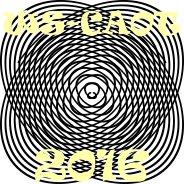We shall introduce the space of Bloch functions and present several characterizations of it. We shall concentrate on results on Taylor coefficients and multipliers.
We shall develop the theory on the unit disc. Starting with the definition of a Bloch function and basic examples we shall consider the space of such functions denoted by $\mathcal B$ and define a norm on it. The students should be able to show that it is a complete normed space and that the closure of the polynomials under such a norm, denoted by $\mathcal B_0$, can be described in several ways. We shall see that the space $\mathcal B$ is a dual space and identify the dual of $\mathcal B_0$. We shall present different characterizations of the space $\mathcal B$ by means of the pseudo-hyperbolic metric and using the Bergman projection. Another basic objective is to analyze the Taylor coefficient of Bloch functions and to give some results on coefficient multipliers acting on such space. We shall indicate several open problems concerning the Bloch functions when they are defined on $\mathbb C^n$ for $n\geq 2$ and even the new line recently introduced when the functions are defined on the unit ball of $\ell^2$.
Bibliography.
- J.M. Anderson, J. Clunie and C.Pommerenke, On Bloch functions and normal functions, J. Reine Angew. Math., 270 (1974), 12-37.
- J.M. Anderson, A.L. Shields, Coefficient multipliers of Bloch functions, Trans. Amer. Math. Soc., 224 (1976), 256-265.
- K. Zhu, Operators on Bergman spaces, Marcel Decker, Inc., New York, 1990.
Let $M$ be a complex manifold and $\varphi:M\to M$ an holomorphic self-map of $M$. We can define the iterates $\varphi_1=\varphi$ and $\varphi_n=\varphi_{n-1}\circ\varphi$ for all $n\geq 2$. One of the main goals of Complex Dynamics is the study of the asymptotic behavior of the sequence of functions $\{\varphi_n\}$. The first results of this theory goes back to the XIXth century and the beginning of the XXth century. The names of famous mathematicians such as Poincaré, Fatou, Denjoy, Wolff, Carathéodory, Julia, ... quickly arise when database are consulted on this topic.
Nowadays, this topic is still very much alive with the emergence of new techniques and the possibility of connections and applications to other areas of mathematics such as operator theory, ergodic theory, probability or differential equations.
Undoubtedly, in this theory the geometric aspects play an important role and is essential the manifold where we are working on. In setting of one dimensional simply connected complex manifolds, by the Poincaré and Koebe uniformization theorem, we can reduce to study the following three very different types of domains:
- The Riemann sphere: iteration of rational functions;
- The complex plane $\mathbb C$: iteration of entire functions;
- The unit disk $\mathbb D$: iteration of self-maps of the unit disk.
The analysis of the latter is the main objective of this course. Montel's theorem clarifies the difference between the unit disk and the other two cases: If $\varphi:\mathbb D\to \mathbb D$ is analytic, then $\{\varphi_n\}$ is a normal family.
The study of the dynamics of an arbitrary analytic self-map $\varphi$ of the (open) unit disk $\mathbb{D}$ is a classical and well-established branch of complex iteration. Probably, the central result in the area is the celebrated Denjoy-Wolff theorem, which states that,
Theorem 1 (Denjoy-Wolff Theorem, 1926). If $\varphi:\mathbb D\to \mathbb D$ is analytic and is not an elliptic automorphism, then the iterates $(\varphi _{n})$ converge to a certain point $\tau\in\overline{\mathbb{D}}$ uniformly on compacta of $\mathbb{D}$.
This point is clearly unique and it is called the Denjoy-Wolff point of $\varphi$.
By Fatou's theorem, the above iterates $(\varphi _{n})$ are indeed well-defined (in the angular or radial sense) in the boundary of the unit disk $\partial\mathbb{D}$, up to a set of Lebesgue measure zero. In other words, there is a set $A\subseteq\partial\mathbb{D}$, with Lebesgue measure zero, such that the radial limit $\varphi _{n}(\xi ):=\lim_{r\to 1 }\varphi _{n}(r\xi)$ exists, for all $\xi \in \partial\mathbb{D}\setminus A$ and for all $n\in \mathbb{N}$. This fact opens the possibility of considering (almost everywhere) the iteration $(\varphi _{n})$ in the closed unit disk and poses the natural question about how the classical Denjoy-Wolff theorem can be extended to this situation. Besides this problem has been treated by several authors, a definitive boundary version of the Denjoy-Wolff theorem is still open, mainly due to the difficulties that appeared in the so-called parabolic case.
In this course, we will prove Denjoy-Wolff theorem and analyze three different techniques to tackle the boundary extension to $\partial \mathbb D$. The first tool appeared in [1] and uses results about composition operators on Hardy spaces. Bourdon, Matache and Shapiro proved:
Theorem 2 ([1], Theorem 4.1). If $\varphi:\mathbb D\to \mathbb D$ is non-inner analytic and its Denjoy-Wolff point $\tau$ belongs to $\mathbb D$, then $\varphi_n$ converges to $\tau$ a.e. on $\partial \mathbb D$.
Theorem 3 ([1], Theorem 4.2). Suppose $\varphi:\mathbb D\to \mathbb D$ is analytic and its Denjoy-Wolff point $\tau$ belongs to $\partial \mathbb D$.
- If $\sum _n(1-|\varphi_n(0)|) \lt \infty$, then $\varphi_n$ converges to $\tau$ a.e. on $\partial \mathbb D$.
- If $\varphi$ is inner and $\varphi_n$ converges to $\tau$ a.e. on $\partial \mathbb D$, then $\sum _n(1-|\varphi_n(0)|)<\infty$.
Corollary 4 ([1], Theorem 4.4). Suppose $\varphi:\mathbb D\to \mathbb D$ is analytic, its Denjoy-Wolff point $\tau$ belongs to $\partial \mathbb D$ and $\varphi'(\tau)\lt 1$. Then $\varphi_n$ converges to $\tau$ a.e. on $\partial \mathbb D$.
There have been two more recent papers where this problem has been tackled. Namely, one by Poggi-Corradini [3] and another by Díaz-Madrigal, Pommerenke and the author of these notes [2]. The technique used in [3] is based on the behaviour of certain harmonic measures associated with the iterates $\varphi_n$, while in [2], the authors used techniques coming from geometric function theory. It is worth mentioning that a general version of the boundary Denjoy-Wolff problem is open.
The program of the course is the following:
- Monday: A general introduction to Complex Dynamics with examples and the statement of the Denjoy-Wolff Theorem.
- Tuesday: We will give the proof the Denjoy-Wolff Theorem and analyze common tools to understand the proofs of the proof of Theorems 2 and 3 and Corollary 4.
- After these sessions, each student will deepen in one of the different tools to show a partial answer to the Boundary Denjoy-Wolff theorem.
Bibliography.
- P.S. Bourdon, V. Matache, and J.H. Shapiro, On convergence to the Denjoy-Wolff point, Illinois J. Math. 49 (2005), 405--430.
- M.D. Contreras, S. Díaz-Madrigal, and Ch. Pommerenke, Boundary behavior of the iterates of a self-map of the unit disk, J. Math. Anal. Appl., 396 (2012), 93--97.
- P. Poggi-Corradini, Pointwise convergence on the boundary in the Denjoy-Wolff theorem, Rocky Mountain Journal of Mathematics, 40 (2010), 1275--1288.
- J.H. Shapiro, Composition Operators and Classical Function Theory, Springer-Verlag, New York, 1993.
We will explore the basic properties of functions in the classical Hardy space of analytic functions in the unit disc and prove the classical theorem of Beurling describing the shift invariant subspaces. Given an inner function, we will study the boundary behavior of functions in the corresponding model space.
This course will present a smooth introduction to the celebrated Krzyż conjecture, an extremal problem for analytic functions in the disk. The problem will serve for setting the stage for various basic techniques of one complex variable: Schwarz-Pick Lemma, finite Blaschke products and their characterization, Herglotz representation theorem, integral means and Hardy spaces, normal families, extremal problems and coefficient estimates, elementary variational methods, analytic covering maps, Carathéodory-Toeplitz theorem for analytic functions from the disk into the right half-plane, Féjer-Riesz theorem for positive trigonometric polynomials and/or others, as time permits.
The contents of a couple of selected chapters of monographs and parts of research papers on the course topic will be presented. These materials will be available to the students together with a set of notes covering parts of the course contents.
The task of each student will consist in studying the materials furnished, in understanding some exercises and basic examples in tutored sessions with the lecturer and, finally, in presenting an oral exposition of 10-15 minutes of a small part of the work.

